Orangutans are one of the most fascinating primates that inhabit our planet. These arboreal apes have a unique culture, and their intelligence rivals that of great apes such as chimpanzees and gorillas.
Despite being among the largest tree-dwelling animals on earth, orangutans are under threat from several predators.
In this article, we will explore the various predators that pose a danger to orangutans in their natural habitat. We will examine how these predators interact with orangutan populations and evaluate why some of them may be more dangerous than others.
By understanding the threats faced by orangutans, we can take steps to protect them and ensure their survival for generations to come.
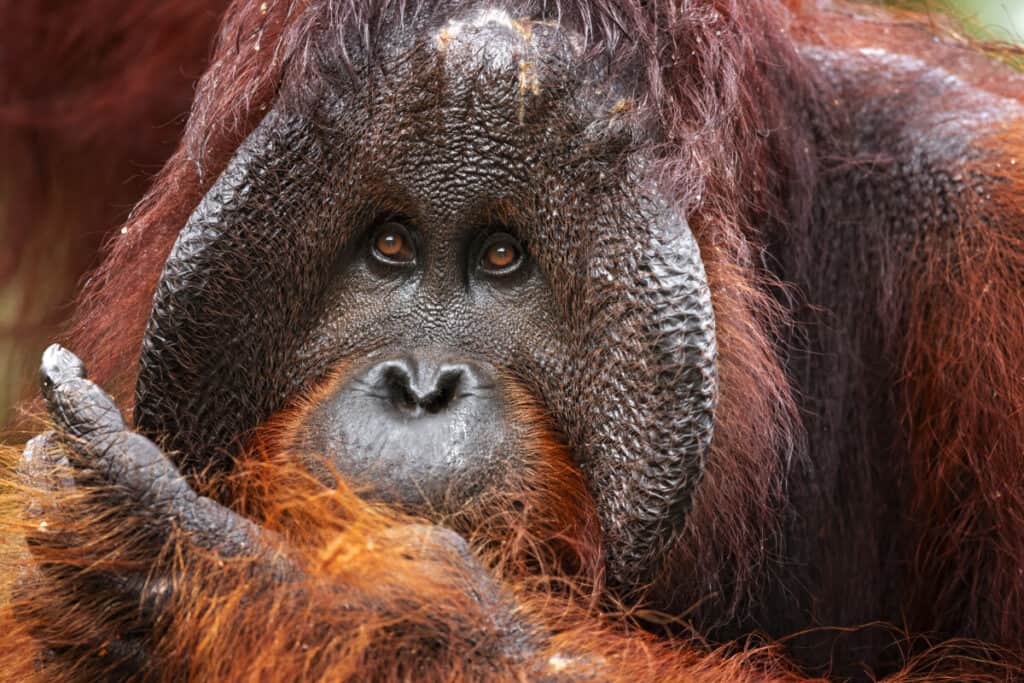
The Importance Of Understanding Orangutan Predators
The importance of understanding orangutan predators cannot be overstated in the context of conservation efforts. Orangutans are a keystone species that play an essential role in maintaining the health and balance of their ecosystem. As such, any factor that threatens their survival will have cascading effects on other species and the environment as a whole.
One significant threat to orangutan populations is predation by several different animals, including tigers, crocodiles, leopards, pythons, and humans. Understanding these predator-prey relationships can help researchers develop effective management strategies for protecting orangutans and their habitats.
Additionally, studying these interactions can provide insight into broader ecological systems and the delicate interplay between various species within them. Ultimately, this knowledge can inform policies that promote sustainable human-wildlife coexistence while safeguarding vulnerable animal populations against extinction.
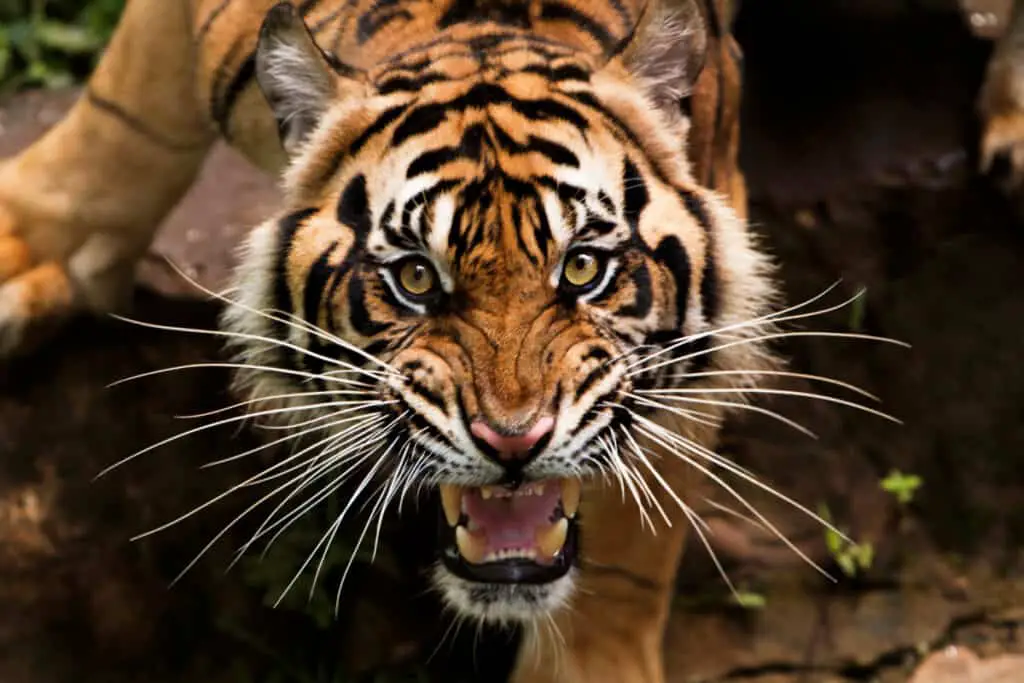
Tigers And Leopards
The orangutan is a beloved species known for its intelligence, gentle nature, and striking physical appearance. However, these primates are not exempt from the harsh reality of being preyed upon by large carnivores.
Tigers and leopards are among the most significant natural predators of orangutans in their native habitats. This fact evokes mixed emotions in many people who care about wildlife conservation efforts.
Habitat fragmentation due to deforestation has resulted in increasing encounters between orangutans and tigers or leopards as they share dwindling spaces. While it can be difficult to witness such predator-prey interactions, it’s essential to understand that this is part of the natural order of things.
Nevertheless, conservation efforts aimed at protecting both predators and prey must continue if we hope to preserve these magnificent animals’ populations in an ever-changing world.
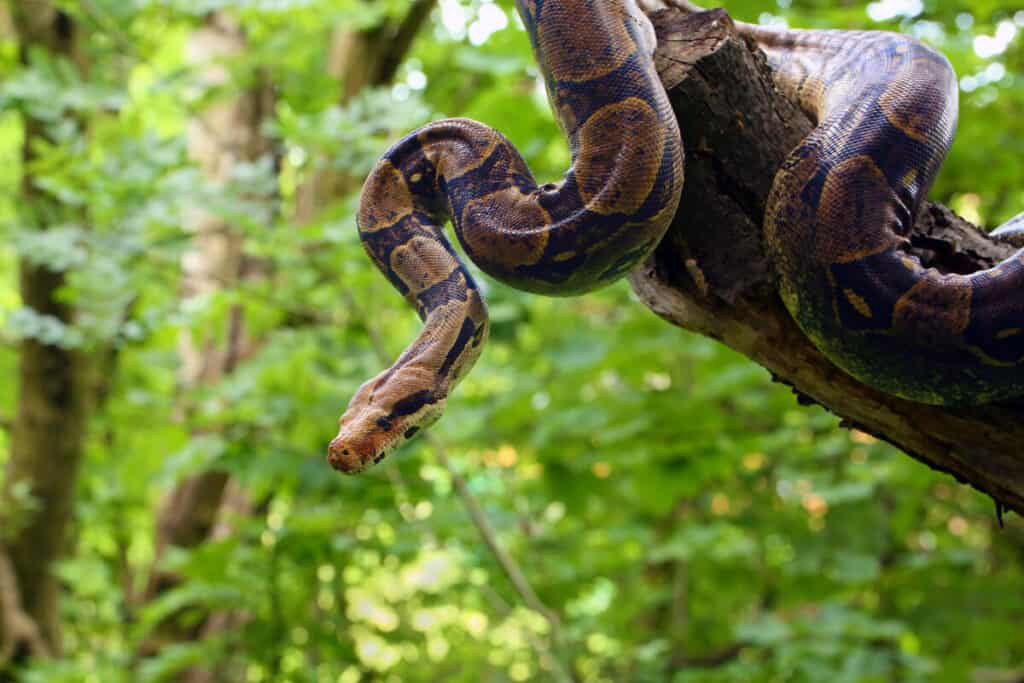
Snakes And Other Reptilian Threats
Orangutans can fall victim to various snake species that inhabit their natural habitat. Snakes use different hunting tactics when preying on orangutans. Some snake species like pythons and boa constrictors rely on their strength to squeeze their prey until it suffocates. Others like venomous cobras and vipers strike quickly with a deadly bite.
As arboreal creatures, orangutans spend most of their time in trees, making them vulnerable targets for tree-dwelling snakes like green tree pythons. Moreover, juvenile orangutans may be more susceptible to predation by ground-dwelling snakes as they frequently move between trees without adult supervision.
Despite this threat, there is limited research on the impact of reptilian predators on orangutan populations, which calls for further studies into this important issue.
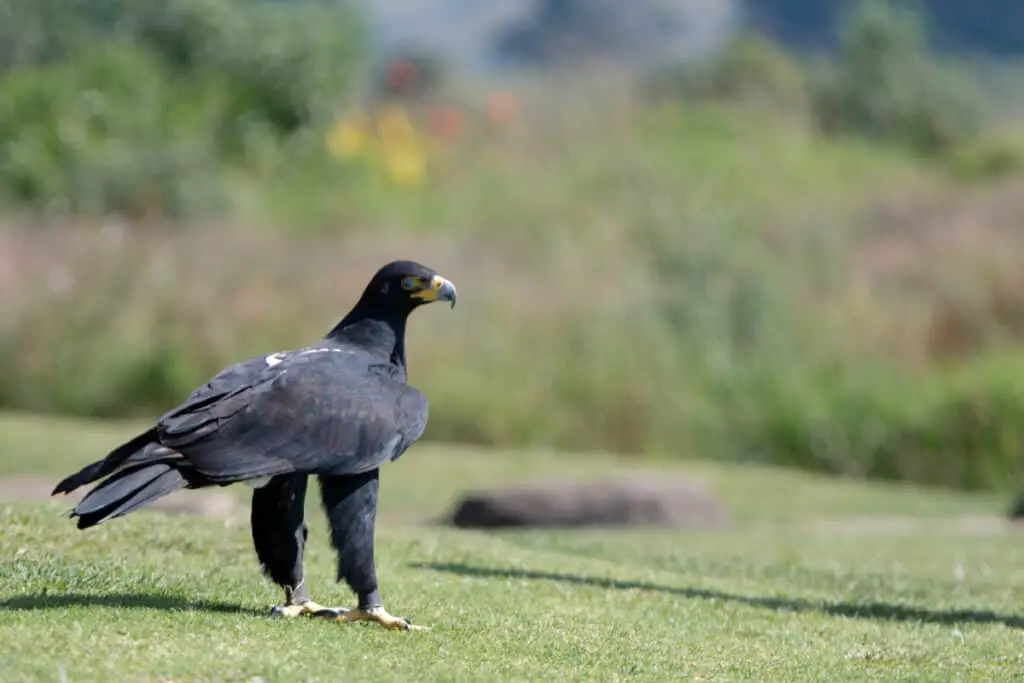
Birds Of Prey
Birds of prey are known for their hunting techniques that have evolved to fit the lifestyles and habitats of their prey. They use a variety of tactics such as aerial attacks, surprise ambushes, and stealthy approaches to catch their food. These predators include eagles, hawks, falcons, owls, and vultures. All birds of prey share some common characteristics like sharp talons, keen eyesight, powerful wings, and hooked beaks.
When it comes to orangutan survival strategies against birds of prey behavior, these primates rely on different ways to avoid becoming victims. Firstly, they build nests in trees high enough or dense enough to deter most raptors from reaching them. Secondly, orangutans make vocalizations when they sense potential danger which alerts other members of the community about possible threats. Thirdly, they may also hide themselves among foliage or branches until the predator has passed by.
Lastly, adult males will try to defend females and young ones if an attack occurs while infants cling tightly onto their mothers’ bodies during flight attempts. Despite these efforts by orangutans to protect themselves against bird predators; however, sometimes even with all precautions taken into consideration there is still a possibility for them being targeted by these hunters due to various reasons including desperation for food sources or territory disputes between species in overlapping habitats.
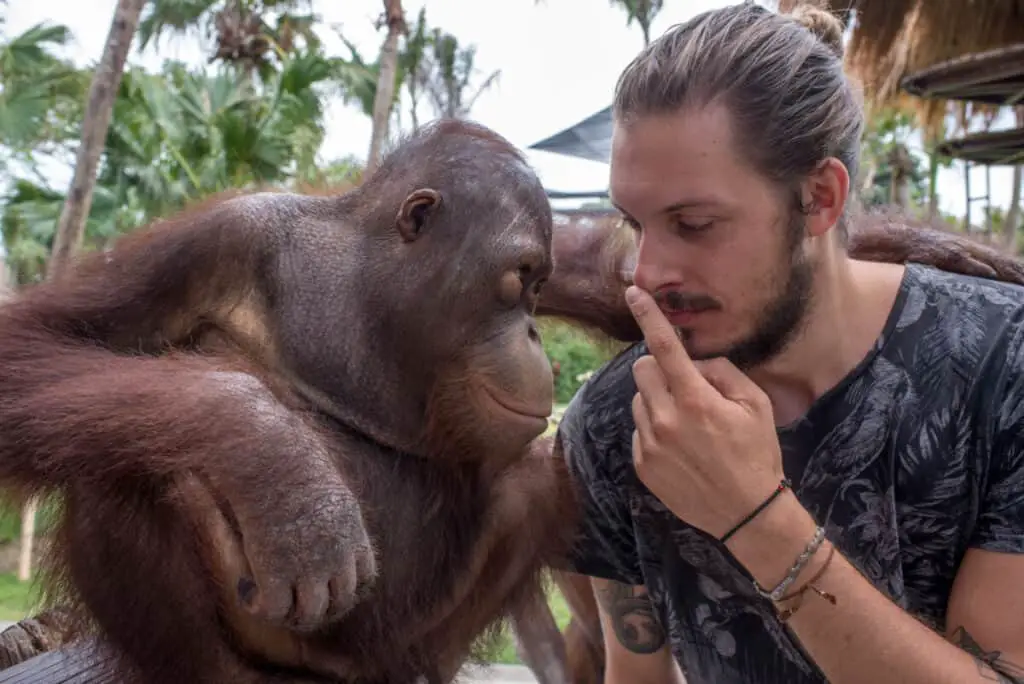
Humans
Human-wildlife conflict is a significant problem for the survival of orangutans. The destruction of their natural habitat due to human activities, such as logging and agriculture, has resulted in increasing conflicts between humans and orangutans. As a result, many orangutans are killed or injured by humans who view them as pests or threats. This conflict not only threatens the lives of individual animals but also poses a severe threat to the entire species.
Conservation efforts have been implemented to mitigate the impact of human-wildlife conflict on orangutan populations. Such initiatives include creating protected areas, educating local communities about conservation issues and sustainable practices, and working with government agencies to enforce regulations that protect orangutan habitats.
Additionally, ecotourism has emerged as an alternative source of income for local communities while promoting conservation awareness among tourists. Despite these efforts, however, much more must be done to ensure the long-term survival of this critically endangered species.
Mitigating Human-Orangutan Conflict
As noted in the previous section, humans are the greatest threat to orangutan survival. However, these primates also face threats from other predators in their natural habitat. Among the top predators of orangutans are clouded leopards and reticulated pythons. These animals can pose a serious danger to young or injured orangutans who may fall prey to them.
Despite this risk, sustainable solutions have been developed to protect orangutans from predation while promoting community involvement. One such solution is the use of predator alarms that alert nearby villagers when dangerous animals like leopards or snakes are detected near human settlements. This early warning system enables residents to take appropriate measures to keep themselves and their livestock safe while allowing wildlife like orangutans to continue living undisturbed in their native habitats.
Another effective strategy involves working with local communities to promote responsible pet ownership practices. Domestic dogs often roam free and can attack or kill both adult and juvenile orangutans. By teaching pet owners how to properly care for and restrain their pets, as well as educating children on how important it is to respect wildlife, we can help reduce conflicts between humans and orangutans.
Through these types of initiatives, we can create more harmonious relationships between people and primates while ensuring the conservation of one of our closest relatives in the animal kingdom.
Steps To Protecting Orangutan Populations From Predation
Orangutans are vulnerable to predation both as young and adult individuals. Their natural predators include large cats such as tigers and leopards, crocodiles, and human beings. Despite the fact that orangutans have no known natural enemies except for humans, they continue to face threats due to habitat destruction and poaching activities. Conservation efforts are underway to mitigate these issues.
Community involvement is crucial in protecting orangutan populations from predation. Local communities can play an important role by assisting conservationists in monitoring orangutan habitats and alerting them of any unusual activity or signs of disturbance.
Additionally, education programs aimed at raising awareness about the importance of preserving orangutan populations may help reduce incidents of hunting or accidental killing by locals who view these animals as a nuisance rather than a valuable resource.
Other steps towards conserving orangutans include implementing stricter laws against illegal logging activities and increasing funding for research on their behavior patterns which could provide insight into ways to better protect them from harm.
Conclusion
Understanding the predators of orangutans is critical to their conservation and survival. Large carnivores such as tigers and leopards pose a significant threat to orangutans in their natural habitat, while reptiles like snakes also prey on these primates. Birds of prey have been known to hunt young or injured orangutans, adding another layer of danger.
Despite these threats from nature, humans remain the most significant predator for orangutans. Habitat loss due to deforestation and poaching are major contributors to population decline.
It is essential that measures be taken to mitigate human-orangutan conflict and protect remaining populations. This includes preserving forest habitats, enforcing anti-poaching laws, and promoting sustainable practices among local communities.
In conclusion, understanding the various predators of orangutans is crucial for protecting this endangered species. Addressing both natural threats and those posed by humans will require cooperation between governments, NGOs, local communities, and individuals committed to conserving wildlife. By taking proactive steps towards preservation efforts today, we can ensure a future where orangutans continue to thrive in their native habitats.

